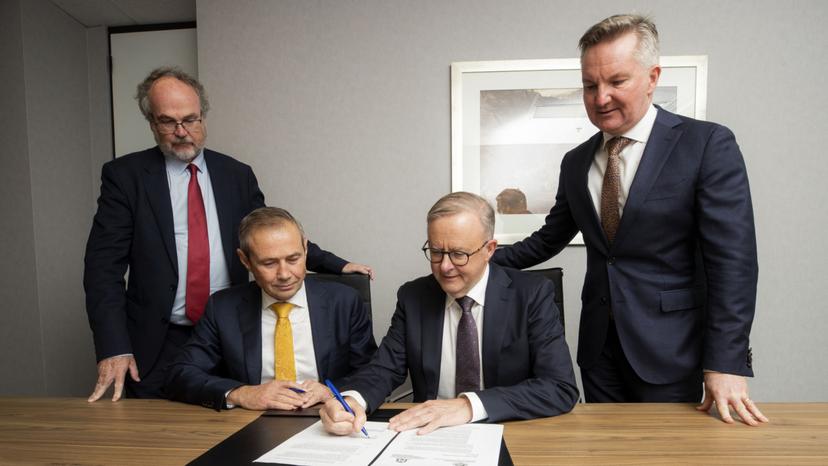
The UK government has committed to around 30 GW more solar capacity in Great Britain’s generation mix by 2030, as part of its Clean Power 2030 Action Plan unveiled on Dec. 13, 2024.
Targeting greater solar deployment is just one of a raft of measures included in the 138-page plan published by the Department for Energy Security and Net Zero (DESNZ). The UK government aims to have enough clean power generation to meet total annual electricity demand by 2030, backed by unabated gas supply to be used “only when essential.”
The multi-pronged approach proposed by DESNZ involves planning reform, a review of electricity markets, new measures on short- and long-duration flexibility, as well as policies to support supply chains and workforce in the renewables industry.
The targets
On targets, solar capacity has been set in line with recommendations produced by the National Electricity System Operator’s (NESO) earlier in 2024. DESNZ has stuck with a 45-47 GW target for solar deployment by 2030, more than double existing capacity, but a figure viewed by industry association Solar Energy UK as below the sector’s full potential. This would, however, position solar as at least second – and potentially the largest – generation technology in Great Britain in 2030. DESNZ has targeted 43-50 GW of offshore wind and 27-29 GW of onshore wind capacity. The report notes there is scope for solar to exceed its 47 GW upper limit.
Battery energy storage systems (BESS) will also play a key role. A fivefold increase in the UK BESS fleet to 22-27 GW is included in plans for flexible capacity, as well as an increase in long-duration energy storage (LDES) provision, to reach 4-6 GW of dispatchable power by 2030. Plans for dispatchable power also include 35 GW unabated gas capacity, as well as 3-4 GW of nuclear – down from 5.9 GW in 2023.
The market
There are still major decisions to be made about the future of Great Britain’s wholesale electricity market, including whether to introduce zonal pricing, but some changes appear set in stone.
A cap and floor scheme for LDES is coming, potentially as soon as Q2 2025. There will also be changes to the Capacity Market, including new pathways to support decarbonization of unabated gas plants, such as conversion to hydrogen-to-power, and possible multi-year agreements for unabated gas plants that convert to include carbon capture.
CfD contract terms could be extended to provide more certainty for investors. A consultation on increasing the current 15-year CfD term is planned for early 2025. There will also be more transparency around auctions through publication of an auction schedule, as well as information on capacity goals for upcoming allocation rounds. The government has also committed to review auction parameters including reference prices, which affect the budgets allocated for CfD rounds, following concerns raised by industry.
Storage
To support a fivefold increase in Great Britain’s BESS fleet, the government has said it will explore how grid-scale batteries are included in future planning reforms. There will also be a consultation on how grid-scale batteries are incorporated in environmental permitting regulations, and DESNZ will consider financing options for small-scale batteries as part of its wider Warm Homes plan.
A review of charges levied on home batteries and EV batteries that provide vehicle-to-grid services is also expected. At present, consumption levies that make up a portion of household electricity bills are charged on import but are not refunded when electricity is exported. This serves as a disincentive to providing flexibility and the government plans to review options, which will be set out in a 2025 Clean Power Flexibility Roadmap.
Consumer-led flexibility
Much of the 2030 plan depends on consumer-led flexibility. Quickly adopting half-hourly settlement across the retail market has been described as “critical” to hitting targets. Industry regulator Ofgem is overseeing the ongoing transformation. It’s thought that more frequent settlements in combination with increasing smart meter adoption should improve short-duration flexibility.
In spring 2025, the government will set out its position on a new licensing regime for consumer-led flexibility service providers, load controllers and tariff data accessibility. Legislation on cyber-security requirements for appliances such as heat pumps is also expected.
Grids
Connection reform is set to continue and, subject to regulator approval, the system operator will be given more flexibility in how the queue is manage. This could see NESO manage the queue order based on over- and under-supply. Provision will be put in place to avoid impacting projects already advanced in development, such as those that have secured planning consent, or support through a mechanism such as CfD or the Capacity Market.
Planning reform
The Clean Power Action Plan also highlights the government’s decision to raise the capacity threshold that determines when solar projects in England become subject to central government approval for planning consent. This will be increased from 50 MW to 100 MW in line with planning rules for wind generation. Broader planning reform is still to come, and the government intends to introduce a bill with measures to accelerate consenting for critical infrastructure, such as grid upgrades.
A review of secondary legislation and other legal requirements will target the processes used to challenge planning approvals for projects. Most legal challenges to government consent orders on nationally significant infrastructure are unsuccessful in England but can lead to uncertainty and delays for projects.
Great British Energy
A new state-owned investment vehicle Great British Energy (GBE) will “lead or co-lead” renewable generation projects through the pre-development phase and, in some cases, construction and operation according to the government. This is in a bid to de-risk investment in renewables and to accelerate development timelines. GBE is also expected to develop projects on public land, increasing generation capacity on government-owned estates.
Economy
The UK government is positioning its Clean Power 2030 policy as a plan to unlock GBP 40 billion ($50 billion) of investment a year, creating thousands of jobs in the process. Improving living standards through economic growth was a central plank of the Labour Party’s 2024 general election campaign. In July, Solar Energy UK chief executive Chris Hewett told pv magazine “There is no path to [the government’s] growth strategy that doesn’t go through the clean energy transition.”
One of the key challenges will be to deliver 2030 targets without putting pressure on households. UK electricity prices were higher than all but three EU member states (Germany, Denmark and Ireland) in the first half of 2024, according to a House of Commons report published in November. Political opposition to the government’s plans hinges on the need to bring energy costs down for businesses and consumers.







